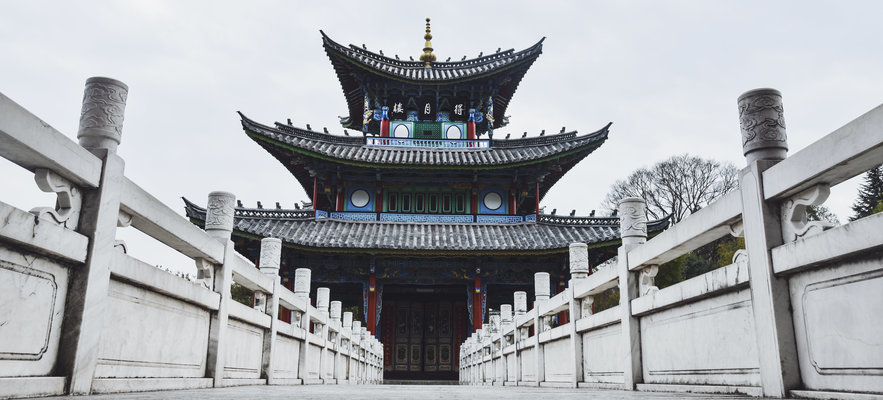A special thank you to our dear guest Melanie Timmerman, for writing this blog post and giving us your unique viewpoint on Lijiang.
Yunnan is said to be China’s most diverse province with colourful culture, a high diversity of ethnic minorities and various landscapes ranging from the foot of the Himalaya to the tropical borders of Laos and Vietnam. For western travelers, there is a popular route that passes through three iconic places that can’t be mentioned without each other, like three inseparable siblings: Big brother Dali, middle sibling Lijiang and little sister Shangri-La.
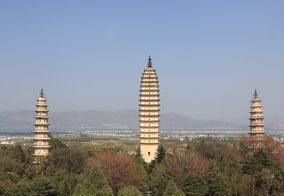
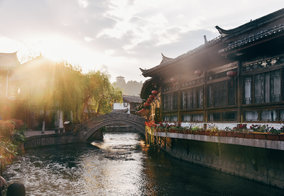
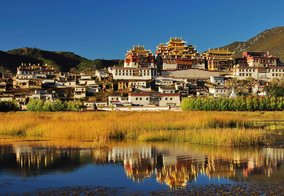
After coming to Dali for the first time five years ago, I fell in love with this little old town, laying peacefully between the high dooming Cangshan mountains in the west and the tranquil Erhai lake in the east. I planned to continue to Lijiang, but time unfortunately wouldn’t allow me.
Now, having lived in Kunming for 3 years, I’m not new to the diversified culture of Yunnan. I’ve visited Dali more times than I could count and I took my parents on a road trip up to Shangri-la. But also during that trip, time unfortunately forced us to skip Lijiang. Is Lijiang suffering from the so called ‘Middle Child Syndrome’?
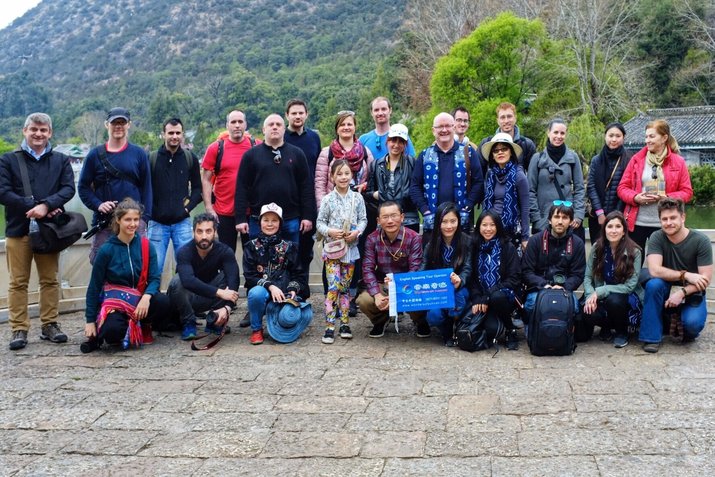
This time, I joined the FAM-tour with Wonders of Yunnan and I finally got to visit Lijiang. And even though I’ve heard many friends say Lijiang is boring, it’s fake or it’s touristic, I felt this old town welcomed me with a charming fairy-tale-like atmosphere.
We arrived at one of Lijiang’s top attractions, the Black Dragon Pool, where we met our cheerful tour guide. The Black Dragon Pool is a beautiful park around a small lake, with typical Chinese architecture, where on a clear day you have stunning scenic view of the Jade Dragon Snow Mountain, which will make any photographer go crazy. Around there, you can have an enjoyable stroll or relaxing rest after a long day in the busy town.
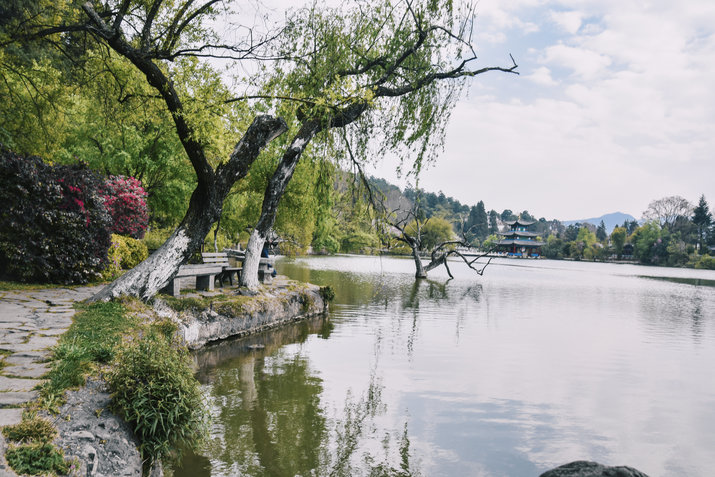
Inside the Black Dragon Pool Park there is a little hidden gem, the Museum of Naxi Dongba Culture. I am normally not a big fan of museums, they often bore me with repetitive relics and long texts I can’t be bothered to read. But this small museum really caught my attention, also thanks to our enthusiastic knowledgeable tour guide. The same is true for the Naxi minority. All ethnic minorities in China have their own special characteristics, clothing and festivals, which differences aren’t always very visible to us foreigners. But for me, the Naxi stood out by two interesting cultural customs:
The first one is Dongba culture. The Dongba are shamans of the Naxi culture, who until this day still play a big role in their community. Shamanic cultures always intrigued me, so this particular part of Naxi culture really appealed to me. The museum exhibits in a clear way how the Dongba culture developed under Han, communist and modern influence. What’s also interesting is that the Dongba shamans pass on their unique pictographic writing system called the Dongba script. It is comparable with old Egyptian hieroglyphs. Only the Dongba can read it and there are only a handful people in the world who understand this Dongba script.
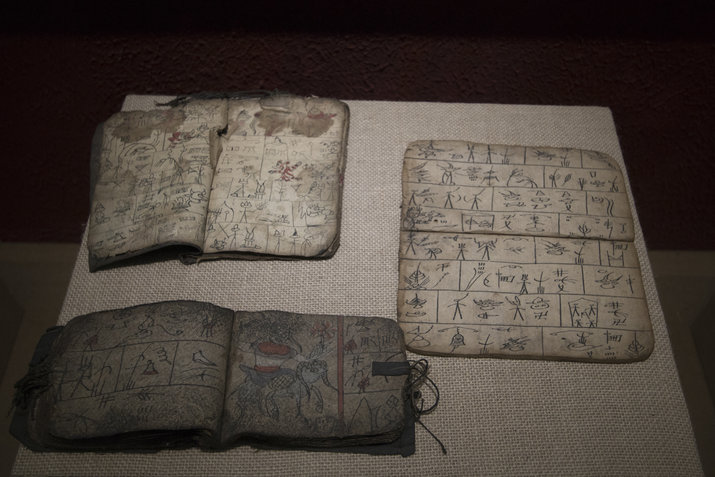
Secondly the thing that most intrigued me about the Naxi: their matriarchal society. Mosuo people are a specific group among the Naxi. Matriarchal means inheritance goes through the female line of the family and the women are the head of the house. Another particular interesting aspect is the ‘walking marriage’. A ‘walking marriage’ is the name for all sexual relationships, thus not based on a wedding ceremony or vows like in Western culture. Women can get as many lovers as they want, having several boyfriends at the same time if they want, though that is not common. Lovers never live together, but the man sneaks into the woman’s house at night and leaves before dawn. Everyone lives with their own family and raising kids is the responsibility of the martial family. It’s the mother’s brothers and cousins who fulfil the father-role for a child. It even goes so far that the Naxi language doesn’t have a word for ‘father’. A father can choose to play a role in his child’s upbringing, but there is no moral or legal obligation to do so.
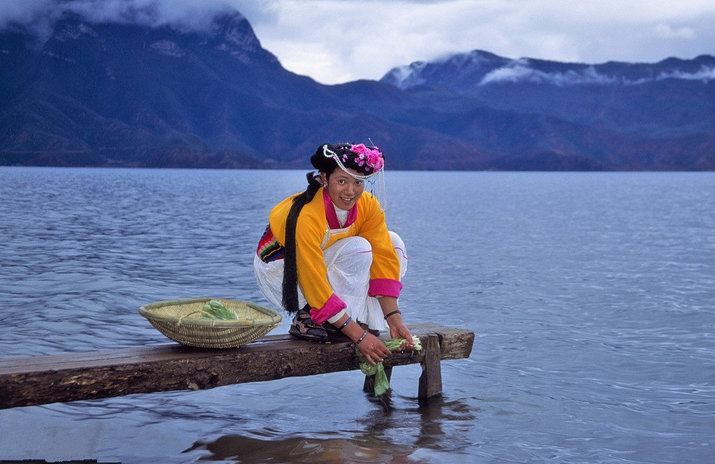
It is refreshing to see a culture where there is no double standard for women, where women can enjoy sexual freedom without being judged. Unfortunately we didn’t have time to visit a traditional Mosuo village to see what is left of this traditional life style. Throughout history there has been many attempts to change the Mosuo culture. Neither of them succeeded and the Mosuo still practice their traditional customs, though adapted to modern life.
The Museum of Naxi Dongba Culture is definitely a must visit if you are interested in the particular Naxi culture.
Our trip continued to the Old Town. And what can I say about it, is it boring? I didn’t think so. If you can look past the typical souvenir shops that you can find in any Chinese Old Town there is a charm in Lijiang’s small alleys and colourful courtyards. Is it fake? Maybe it’s not actually ‘old’, but every ‘Old Town’ was new at some point. Is it touristic? Yes, like any other place in China. We only spent one short day in Lijiang and I feel I haven’t fully experienced this town. The buildings are beautiful and I can imagine it being stunning in the morning when all the shops are closed. I'll definitely come back to spend some more time strolling around with my camera! And I regret that I skipped it last time, so if you have doubts if you should visit Lijiang on your way from Dali to Shangri-La, you definitely should make a stop there!
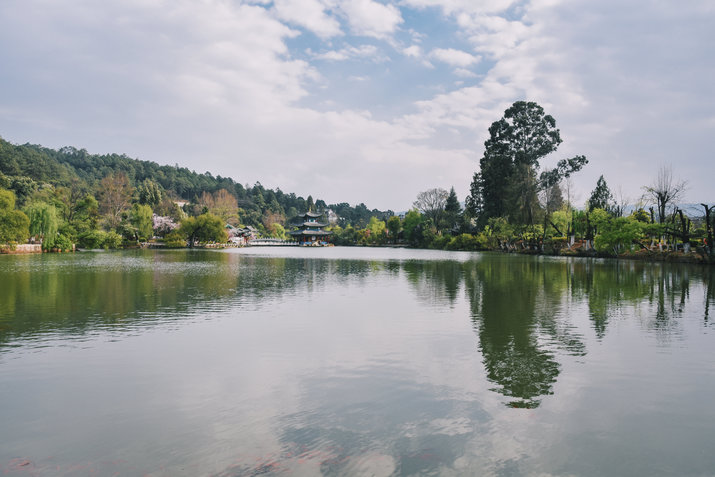
Don't miss out on the Three Siblings with our 8-day Yunnan Classic Tour! Learn about Naxi culture and Dongba script with our Half Day Naxi and Dongba Tour! You can also tailor make your own itinerary to make sure you don't miss out on anything you want to see! Or contact us for more information!
To learn more about our little hidden corner of the world and get more info on special tours and deals, follow us on Facebook, Twitter and Instagram!!!
- 339 reads
- Like this






